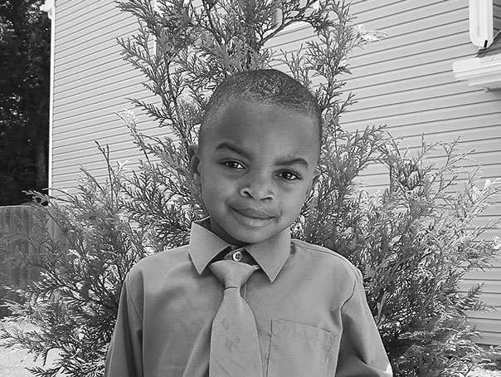The No Cry Discipline Solution (35 page)
Read The No Cry Discipline Solution Online
Authors: Elizabeth Pantley

140
A Peaceful Home: Staying Calm and Avoiding Anger
acting out perhaps in the simplest way, but at the wrong time, and
we release all our anger at our unsuspecting child. It’s the “kick
the cat” syndrome.
At other times, our child may indeed have misbehaved. The
misbehavior triggers our
anger
release button—our child’s behavior is added to the growing pileup of other angers, which exaggerate
and distort our response. So, rather than having an appropriate
reaction to the situation at hand, we explode with all our pent-up
anger from so many other issues.
Mother-Speak
“ When I have my bad days I have to keep reminding myself
not to take out my problems on my daughter. I keep telling
myself it’s really my mood that’s the problem, more than my
child’s behavior. So I say in my head over and over again,
‘Do not take out your bad mood on Arianna.’ It really helps
on those bad days.”
—Kristi, mother to Arianna, age 30 months
Anger Is Masking Other Emotions
Human beings are complex creatures. The emotions we show are
not always what they seem to be. There are times when what we
truly feel is hidden but what escapes to the world is anger. There
are times when anger masks other emotions such as worry, fear,
embarrassment, frustration, or helplessness, such as when your
child disappears at the grocery story (worry), runs into the street
(fear), has a tantrum in public (embarrassment), continues his mis-
behavior no matter what we do (frustration), or is disrespectful





Why Do Parents Get Angry at Their Children?
141
and mean to others (helplessness). The anger that erupts in these
cases prevents us from acknowledging the painful emotions that
are at the root of the situation and can even be a disguised cry of
distress.
Mother-Speak
“ I think that anger is sometimes associated with our own
fears of adequacy. I feel frustration and anger when my child
misbehaves in public or around friends or family members.
Sometimes it is so hard to handle a situation when you feel
the stares of those around you. You fear what they are going
to think of your parenting. Even though it shouldn’t matter,
many times it does.”
—Anne-Marie, mother of Lindsey, age 4
It’s a Normal Emotional Response
to Problems
Human beings have a wide range of emotions, and anger is one of
them. To be human is to experience a fl ow of emotions in response
to internal stimulus and external events. All people get angry. It
is a natural, biological response to pain (physical or emotional),
threats, and frustration. Anger inspires powerful, focused, single-
minded behaviors that are necessary for people to defend them-
selves when they are in dangerous situations. At those times, anger
is a necessary human survival mechanism. The problem, of course,
is that anger is not perfectly selective; we get angry in situations
that don’t truly call for anger.

142
A Peaceful Home: Staying Calm and Avoiding Anger
Miles, age 4
Your natural personality traits will also dictate how mad you
get and how easily you are set off. Some people are more easily
angered than others, and everyone handles their emotions dif-
ferently. Some people shout, some strike out, some become irri-
table. Some turn their anger inward as they simmer and sulk, even
becoming ill with headaches, stomachaches, or worse.
Keep in mind also that our moods affect our responses to our
children. On a good day, when we our mood is cheerful, a spilled
cereal bowl is just a spill. On a diffi cult day, in a bad mood, it’s an
intentionally created disaster. We aren’t perfect beings, and we
should never expect perfection of ourselves, just as we shouldn’t
expect our children to be perfect angels every day.
We can learn to identify, manage, and control our angry feel-
ings so that our reactions don’t escalate out of control and make
Why Do Parents Get Angry at Their Children?
143
Key Point
\Anger itself cannot be eliminated, nor need it be. Anger is not
the real problem. The problem is in how we respond when
we are angry.
situations worse than they already are. We can learn to use anger
as a cue that something is wrong and needs to be changed. We
can, in fact, turn angry emotions into a launching pad for practical
problem solving.
Trying to NOT Get Angry
When your child throws an Olympic-sized tantrum at the shop-
ping mall, paints on the sofa, spills juice on your computer, or hits
his baby sister, the natural, automatic, and inevitable response is
anger. Some people advise against hording anger and tell you to
let it loose. But psychologists tell us that this is a dangerous belief
as it can escalate anger and possibly lead to aggression. It also can
prevent fi nding a solution to the real problem.
Instead of trying
not
to get angry—which is nearly impossi-
ble—or holding your anger in (which can backfi re in other ways),
it would be better to focus on
identifying
your emotions
and properly
responding
to the situation at hand. In other words, the more you try not to be angry in anger-producing situations, the more likely
your emotions will explode out of control.
The goal is to develop and practice strategies that allow you to
deal with your angry feelings in ways that protect other people
and things, while leading you to the proper resolution for the
problem.



